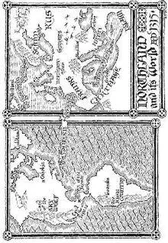Reath pointed to the ground. “See those circular forms? In the time of the Coalition, they built all their cities that way, low domes on circular foundations. Conurbations, they called them.”
“They were copying alien architecture,” Drea said. “And they gave their cities numbers, not names. They didn’t want anybody to forget that Earth had once been occupied.” It was a familiar story, a legend told to children across the Galaxy.
When the Coalition fell the great domes had been abandoned, mined for materials, left to rot. But the first post-Coalition cultures had established their towns and cities inside the old circular foundations. That was half a million years ago, and since then Earth had hosted a thousand cultures, and had fought numberless wars; the people thronging its streets probably weren’t even the same species, strictly speaking, as the folk who built the Coalition. But still the circular patterns persisted. On Earth, Alia thought, everything was ancient, and everywhere reefs of a very deep antiquity pushed through the layers of the present.
The only exception to the general pattern of habitation and cultivation was South America. On its descent toward its landing site in Europe, Reath’s shuttle cut south of the equator and swam across the heart of this continent. The land was covered from mountain peak to shore by a bubbling carpet of crimson-red; only the bright gray stripes of great rivers cut through the dense blanket.
Alia pointed this out to Reath. “It looks like vegetation,” she said. “Like wild vegetation. But there’s no green. ”
Reath shrugged. “It probably isn’t native. Why should it be? Earth is the center of a Galactic culture. For half a million years life-forms from all across the Galaxy have been brought here, by design or otherwise. Some of them found ways to survive.”
Bale said, “So it’s an alien ecology down there. Why don’t they clear it away?”
“Maybe it’s too useful,” Reath said.
“Maybe they can’t, ” Seer said with a cold grin.
The shuttle cut across the Atlantic, sweeping from south to north. In the last moments of the flight Alia peered down into a great valley that she found hard to identify from her memories of Poole’s maps. Then she realized it was the basin of the sea once called the Mediterranean, now drained of water. As elsewhere the urbanization crowded down from the higher lands, but much of the basin floor was colonized only by wild greenery. Here and there she made out lenticular shapes, stranded in the dried mud and grown over by green. They might have been the remains of sunken ships, she thought fancifully, wrecks that had outlasted the sea that had destroyed them.
The shuttle left the basin and flew north over the higher land. They were somewhere over southern Europe — Alia thought it was the area Poole would have called France. They came to a densely developed area that straddled a river valley. Here those circular patterns of development crowded closely, and the ground was textured with buildings and roads, as if carpeted by jewels. The shuttle descended, and Alia found herself falling through a sky that was full of buildings — impossibly tall given Earth’s gravity, surely saturated with inertial-control technology.
Drea peered out in awe at one vast aerial condominium. “Look at that. It’s bigger than the Nord! ”
Bale said dryly, “They don’t believe in economizing on energy, these Earth folk, do they?”
The shuttle found a clear area to land, and dropped without ceremony to the ground. They all clambered out and stood still a moment, allowing Earth’s Mist to interface with their bodies’ systems.
This landing pad was just a clear, shining floor. There were no facilities, nothing like a dock or replenishment station. The nearest buildings looked residential — and, further away, more buildings floated, huge and glittering.
Bale sniffed. “Funny air. Not much oxygen. Lots of trace elements, toxins.”
Reath said, “This is an old world, Campoc…” He fell silent.
The little party was being studied. A small girl had popped into existence a few paces from Alia — literally popped, Alia could hear the small shock of the air she displaced. She was wearing a jumpsuit of some substance so bright it shone. She stared at Alia, then disappeared again.
Alia whispered to Drea, “Skimming?”
“I think so—”
Another visitor Skimmed in, this time a man, grossly fat. He glanced at them all, spied Drea, and walked up to her. He leered at her breasts and said something Alia couldn’t hear. Drea snapped, “No.” He shrugged and disappeared.
But he was soon replaced by another, a younger man who gazed at them curiously for a few seconds before disappearing. And then another, an older woman — and then a party, a family perhaps, adults and children hand in hand, who Skimmed in as one.
All around the shuttle people flickered in and out of existence. Alia could feel the air they displaced washing gently over her face. The party clustered together nervously.
“They’re just curious,” Reath said. “Come to see the visitors — us.”
“They have no manners,” Seer said nervously.
“Or attention span,” Denh said.
“Then ignore them,” Alia said.
“Quite right.”
The voice was a dry scratch. Alia turned.
One of the visitors remained while others flickered around her, evanescent as dreams. It was a woman, though her figure was all but masked by a shapeless brown robe. She was small, dark, somehow very solid, Alia thought, as if she were made of something more dense than mere flesh, blood, and bone. She walked through the shimmering throng toward Alia. Her face was round and worn, and her head was hairless, with not so much as an eyelash.
Alia said, “You’re Leropa.”
“And you’re Alia. I’ve been waiting to meet you,” said the undying.
It took Ruud Makaay and his people only a few weeks to set up a prototype test rig of the stabilizer technology. He summoned us all to Prudhoe Bay, on the Arctic coast of Alaska, for a trial demonstration.
I was impressed with the speed with which we had got to this point. But then Makaay had insisted from the beginning that EI was going to use off-the-shelf technology wherever possible. Even the moles weren’t entirely new: in the dying days of the oil industry, smart mechanical critters much like our moles had gone burrowing into the earth and beneath the seabeds all over the planet in search of the last reserves. Similarly the big condensation and liquefaction plants we were planning to set up would, in principle, have been immediately comprehensible to a Victorian engineer: “Gaslight-era technology,” Makaay said. It was just the scale of what we would be attempting that was new — the scale, and the intrinsic smartness of the system.
As well as its technical goals this trial demonstration would be a “bonding session” for us, the project’s champions, Makaay said. And, more seriously, it would give us a chance to rehearse, he said, to begin developing the case we were going to have to make to the world’s serious power brokers if our project was ever to get off the ground.
But for now we were still in development mode, and Makaay was keeping the press out. It was all a question of perception. In advanced engineering, you expected failure; you learned as much from failures as from successes — indeed if you never suffered a failure you probably weren’t pushing the envelope ambitiously enough. But Makaay, after half a lifetime spent trying to sell the unsellable, knew that the public, media, and politicians rarely understood these truths. So, for now, only the core team would be present.
Plus one potential ally, he told me.
Читать дальше












